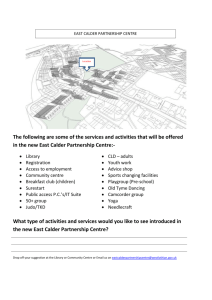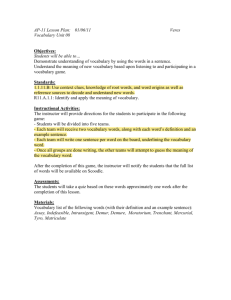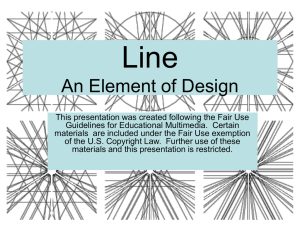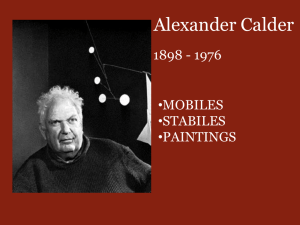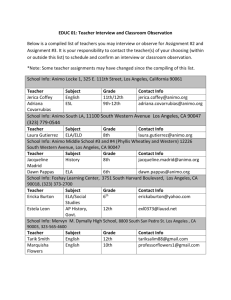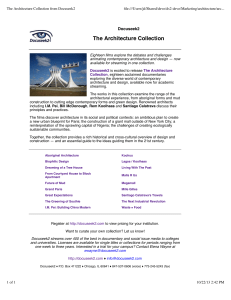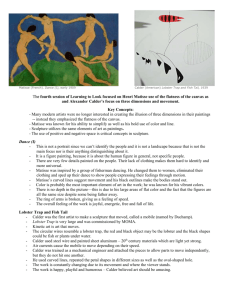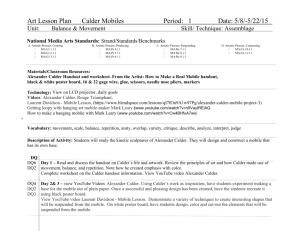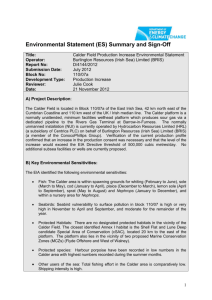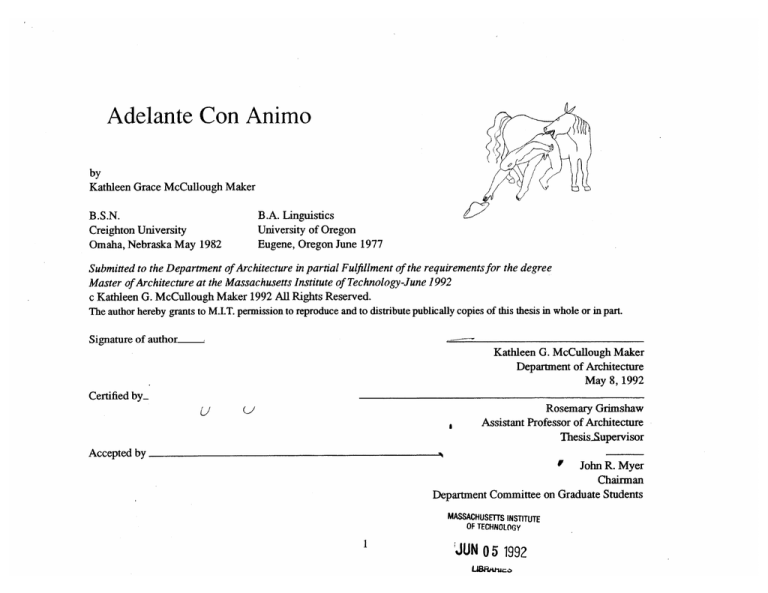
Adelante Con Animo
by
Kathleen Grace McCullough Maker
B.S.N.
Creighton University
Omaha, Nebraska May 1982
B.A. Linguistics
University of Oregon
Eugene, Oregon June 1977
Submitted to the Departmentof Architecture in partialFulfillment of the requirementsfor the degree
Master of Architecture at the MassachusettsInstitute of Technology-June 1992
c Kathleen G. McCullough Maker 1992 All Rights Reserved.
The author hereby grants to M.I.T. permission to reproduce and to distribute publically copies of this thesis in whole or in part.
Signature of author
Kathleen G. McCullough Maker
Department of Architecture
May 8, 1992
Certified by_
,
Rosemary Grimshaw
Assistant Professor of Architecture
Thesis-Supervisor
Accepted by
'
John R. Myer
Chairman
Department Committee on Graduate Students
MASSACHUSETTS INSTITUTE
OF TECHNOLOGY
JUN 05 1992
2
TABLE OF CONTENTS
Title ........................................
Table of Contents ...................................
Acknowledgments ................................
Abstract ...................................
Introduction .................................
Initial Inquiry: Calder, Calatrava, Animo..............
reference
extraction
formulation
reflection
Animo: Stability, Movement, Complexity, Scale....
reference
extraction
formulation
reflection
Site: Circumstance, Surface, Story......................
reference
extraction
formulation
reflection
Assemblage: Precedent, Placement, Marking.......
reflection
credits..............................................
Photography
Resource credits....................................................
B ibliography..........................................................
1
3
.5
. 7
9
10
32
58
78
129
129
130
4
ACKNOWLEDGEMENTS
To my Family:
My husband, David, whose kindness and insight enlivens
me.
My parents and my sister Rae, for their humor, constancy
and enthusiasm.
To Richard, Richard and Michael.
My teachers:
Rosemary Grimshaw, Edward Levine and Shun Kanda who
offered encouragement and a critical eye and who broadened my horizons through their knowledge and experience.
-
i
Y t
reag
f6
Adelante Con Animo
By Kathleen McCullough Maker
Submitted to the Department of Architecture on May 8, 1992 in partial fulfillment of the requirements for the Degree of
Master of Architecture.
ABSTRACT
A propositionof this thesis is that architectureis capable of conveying a sense of animation, movement and energy.
These are elusive properties.Their perceptionperhapsemergesfrom the building'sform or articulation
(referentialto life-like forms). It may emergefrom correlationwith living processes(change, reactivity).
At its most elusive, the perceptionperhapscomes from a capacityfor "animo" ... A kind of completeness,
intrinsicintent, inherentlife. The work of Calderand Calatravais examined in orderto understandhow
such a perception might arise and to clarify what I mean by "animo".
That inquiry is one part in a yet broadersequence of events exploring ways in which buildings are
made and reflecting on ways of working. The journey,from percept towards the design of a composting
fertilizerfactory and ruralrest stop in northernMongolia, is an exploration of these issues.
The thesis is a recordingof the events.
Thesis Supervisor: Rosemary Grimshaw
Title: Assistant Professor of Architecture
8
INTRODUCTION
One intent of this thesis is to become better at answering two questions:
e Why is it that way? (relative to examining architecture)
e What do I do here?(relative to making buildings)
The projected work may be viewed as a kind of vector. In the first part, a direction is sought by examining a place, a use,
and one particular idea about "Why is it that way?" (an idea about the perception of animation and life in buildings).
In the second part, a quantity or magnitude is sought, this through exploring a process towards making a building, as it
occurs. The steps are conducted towards the design of a rural stopover place and compositing fertilizer factory in northern
Mongolia. The second part is a way to reflect on "what do I do?"
The thesis demonstates a series of experiments and inquiries as they occured over the course of the semester and so is
presented in this form, a chronological journal.
No one particular chapter has more importance than another. The lessons learned from an analysis of an existing Calder
sculpture may prove as significant as the derivation of the site. The hope is that the flow of inquiry will have an additive
effect and allow for a fuller understanding of how buildings and the issue of animo are connected.
Most chapters have four distinct divisions (the fifth chapter has a similar method of inquiry but the divisions are less
distinct because, in it, marking-iterations parallel the story, site and precedent information. The chapter "assemblage" is
less sequential than previous chapters.
The areas of subdivision are:
Reference: What is initially revealed; what exists about it
Extraction: highlights, subsequent questions, personal notes, resulting focus
Formulation: act, build, make, convert, formulate.
Reflection: look again, reflect, reevaluate, react.
Chapter One:
REFERENCE
First Excercise: A work space for Calder and Calatrava
This is a short design excercise. Various works from both
Calder and Calatrave are examined. Next, I try to determine what is of primary concern to each designer and how
their buildings, sculptures and mobiles seem to work. From
these, a list of "What to give the designer" emerges. The
aim is not to design a space which appears as their work itself appears, but rather, to provide a workspace which might
promote a way of working as they each seem to work. With
the premise that much of their work conveys some sense of
animation, the goal is simply to undersand better how they
seem to be designing.
Since the workspace needs to be sited somewhere, this excersice is also a means to begin looking at Mongolia. The
country is very poorly mapped and some detective work
may be needed in determining site information. So, Ulan
Bator becomes the site for Mr.Calder's and Mr.Calatrava's
work studio.
Calatrava Working In His Studio
Calder's Studio
Paris, 1931
11
Calder Background
Mechanical engineer. Calder worked in the automative industry, electric utilities, toy manufacturing and as a mechanic on a freighter to Guatemala. He lived for many years
in France. Wherever he was working he set up workshopsin garages, at home or outside studios. He did not teach,
nor take students; but typically worked alone. Calder was
said to be impish, even mischeivious. He had many friendsSartre, Leger, Miro' and Mondrian, but did not get along
Picasso, Dali, or Hemingway. His father and grandfather
were sculptors. Calder produced varied products: household items, toys, mechanized sculpture, mobiles, stabiles.
His wife played the accordion. and he loved to dance.
* Living Creatures:human, and animal
Quotations: J. Lipman, P1,112,172,222
0l
What Concerns This Designer?
4-
e Constellations and universes. Whole systems. Complete organisms "The underlying sense of form in my
work has been the system of the Universe, or part
thereof. For that is a rather large model to work from"
* Sky and its inhabitants.
"fiery" red sunrise.
"p
Stars, moons, orbits, the
Calder Yellow Whale
* Actual Movement: "Just as one can compose colors or
forms, so one can compose motions"
* Hand Craft. Work evidencing "the scars of workmanship" and exploring ways of the material.
Calatrava's Background First trained as an architect,
he later studied at the Swiss Polytechnik and recieved the
doctorate in architectural engineering, producing a dissertation on spatial folding structures. Born in Spain, Calatrava is fluent in several languages. When younger, he
was intensely fascinated by anatomy. He is known as a
good teacher. Calatrava collaborates on projects and has
worked with Rossi's pupils "Reinhart and Reichlin. His
projects include bridges, sculpture ("Toros") and industrial/institutional buildings (schools, factorys, train stations,
concert hall).
arranged in dynamic positions in some museums of natural
history, held in this position by wires and cables in place of
the living animals tendons and sinwews"
Quotations:T.Candela, Quardi di Lolus P.9
What Concerns The Designer?
9 Construction: Pieces in assembly and the structure as
it is composed.
* Reticent materials
e Illusionary movement. "Stabilization of the body
within the possible situation of movement", frozen action.
* Evidence of past life: Fossils, biological fragments
For Calatrava, components are understood first as distinct,
and then as pieces in a system. He is interested in "The
system of forces on which the skeletal structure is modeled." and "the way that the skeletons of large animals are
Calatrava, Train Station Model
EXTRACTION
Calder Analysis
Calatrava Analysis
e Biological-like structures. There is a connection of archi* Constructions which react to the environment and change tecture with anatomy and physiology of living organisms.
with time. Complete organisms ("universes"). Sense of The sense of energy is potential (tensed muscle/skeletal
sway, cycle, rythm, pulse.
joint), rather than kinetic.
* Balance which emphasizes actual movement (components oscillate, spring, are mechanized, react to air).
9 Balance which must not permit actual movement. A static
system, energized by the exhibition of gravity counteracted.
Stabilization of "frozen movement".
* Looking at a piece in isolation does not inform about the
whole. The organism is itself whole. But each of its com- EF =_0
ponents are unique in mass, volume, material, position and
thus are equally critical to the integrity of the organism.
* Looking at a piece in isolation will in fact inform about the
whole assemblage. Redundancy exists. Components exist
* Abstraction occurs. Presumably complex systems are un- as part of a heirarchy. Articulation of a piece evidences its
derstood and depicted in spare summary. Processes are ab- place in the heirarchy. It would be possible to recognize the
stracted and given intrinsic, nonobjective from.
whole in spite of missing pieces.
e Concerned with dynamic systems. He is interested in e Whole organism not abstracted, but rather, understood dichanging velocity and the presence of acceleration.
rectly by means of the systems relative to it (thus materials
may become abstracted. Objective form occurs.)
*Time becomes a vital factor, partially secondary to his concern with actual movement
Calder
Stabile, the Crab
Calatrava
Train Station
W "
--
What To Give The Designer
Based on biographical background information and the effort to look more closely at how Calder and Calatrava
seem to work, a scenario is constructed. The qualities in
a workspace are of two types: those which allow the function of the work to take place easily and those which are
relative in some way to the work method itself. The latter
is more informative in this excersise. These qualities are
concerned with vista and visibility, scale, movement, and
materiality. As an aside, a "risk situation" is included in
each scenario, one which stresses for me some aspect of how
Calder/Calatrava seem to work, by virtue of its direct contrast.
For Calder
-Music area
-Sky views and vistas
-Large volumes for collecting materials and building big
things
-Workshops near family residence
-Backyard (overspill for work, storage and play).
-At least one isolated work area (in order to retreat, see out,
but not be seen)
-Materials evident
-A wheat patch: views of the movement of the field in the
wind, and a vista of the field as it undergoes seasonal change.
A place to view large pattern change.
For Riskier Situation
Inhibit his solitary work method. Provide a student, shortterm, once a year. Calder has the task of explaining to the
student what he is doing. He may not ignore the student.
For Calatrava
-Information area
-Facilitate interaction with others: interconnected, cohesive, contained space.
-Materials reticent; overt sense of assemblage and construction systems rather than the materials themselves
-Temporary rest quarters (workfresidence).
-A place to literally "freeze action" (photo dark room,
model testing area, computer room)
-Of the wheat patch: a place to study pattern at close
range...determine parts, structure, and behavior of individual grasses. The individual plant would interest Calatrava
because it is typically "inert", and yet structured for passive movement and stability.
For Riskier Situation
Request that Calatrava make something out of one, oily,
solid, sticky, piece of clay. No threads, no string, no cutting, no formwork
FORMULATION
SITE DERIVATION
From a photograph of Ulan Bator, the Mongolian Capital,
(formerly Urga) a site for the workspace is devised. The
photograph was taken probably looking to the west. The
comparatively large building on a knoll at the eastern outskirts of the city is selected...partially because it is one of the
few buildings visible with any degree of detail in the photo.
It has a U-configuration with a courtyard facing the west.
An informal yurt village has setted around its parimeter. The
workshops for Calder and Calatrava fall some where along
the south arm of this building; the arm touches the road and,
at its opposite end, nearly reaches into a grove of trees. At
the north it flanks part of the courtyard and at the south, the
informal yurt settlement.
ULAN BATOR
SKETCH/PLANEVIEW
DERIVED FROM PHOTOGRAPH
VP
SITE MARKINGS
These are initial sketches, first overlays
on the existing plan or photograph. Primary directions,
sun movement, focal points and human
activities begin to be addressed.
20
.. .
I
*
SITE MARKINGS
22
24
SECTION
25
Calder's workshop is essentially at ground level and leaks
out onto the road where trucks may access his studio. Family living quarters face the south and protect the ground level
work space from scrutiny. To the north, along the courtyard
the workshop opens out. Calder may climb or ride a lift
to the top of his living quarters where an observatory, althhough small, gives him a view of the sky. The height at this
level distances him from direct view and gives sightings of
the yurt settelment and the more distant wheat patch beyond.
Calatrava's workspace is primarly on the second floor. He
has views and access down to the street, the buildings' main
lobby and the courtyard. By crossing a bridge to the wheat
patch in the courtyard (in order to examine the grasses at
close range) he may even catch glimpses of Calder's workshop below. Inside, the plan for his workspace is more open,
with fewer divisions of spaces than Calder needed. No private residence here, he has semi public restroom, a meeting
room, and a darkroom.
...........
PLAN
27
28
REFLECTION
Looking at Calder and Calatrava's work in general terms
has provided some clues about animo. The working methods and the themes that are important to the two are really
rather divergent. Calder is concerned with whole entities,
abstraction, actual movement, and broad pattern. Calatrava
deals with multiplicity of parts, illusionary movement and
minute pattern. Yet both produce work that gives rise to
a perception of movement and energy. In the next steps a
closer look at movement (related to balance and stability)
may reveal more.
In this first excercise real site information acted as a springboard for the earliest intuitive sketches.
I have developed a fondness for the wheat patch.
Chapter Two
Animo: Stability, Movement, Complexity, Scale
The Earth As Photographed From Beyond the Most Distant Planet In Our System By Voyager I in
February 1990
"In Newton's theories what strikes the literary imagination
is not the conditioning of everything and everyone by the inevitability of its own weight, but rather the balance of forces
that enables heavenly bodies to float in space"
(Calvino, "Lightness" P.23)
R EFER ENCE
Balance, Equilibrium, Stability, and Movement
In this section questions about movement, complexity and scale are asked. What are the minimum number of resting
points needed to stabilize a structure? How are dynamic, biological structures stabilized? Does the perception of animo
come in any way from the physical stability of the structure?
In mechanical structures, three points are needed for stabilization, these three points must lie in opposition. In biological
structures fewer than three points may make contact:
Humans
Stability is provided by the inner ear. An innate sense of
where the body is:proprioenoception, exists. The stability
comes from sway, continual microadjustments and through
feedback systems.
Birds balance on two, even one point well...Feet are broad
or clawed and actually augment the base of support so, at
the very small scale there are really many points of support.
The animal is supported by an infinite number of points in
surrounding water. Movement is controlled by hydrodynamics.
Plants
Plants are capable of passive, elastic movement. Anchoring occurs through compression jointing with the soil.
33
ANALYSIS OF "BIG SAIL"
The contruction and placement of a single, specific Calder
work, the stabile "Big Sail" is examined. How, in a more
detailed way is it put together? What did Calder seem to be
doing here?
The stabile is constructed from steel plates, all painted one
color, black. Legs themselves are built from various-sized
metal sheets. The piecing of sheets which forms the legs
does not look preplaned, but the stiffeners which make the
legs rigid must have been designed. There is a pattern in
the way that pieces are connected. Stiffiners which bind a
leg together run vertically along the length of that leg. Connections between legs are always made horizontally. These
large, horizontal ribs mesh the legs above our heads. They
almost always connect, not two, but three legs at a time
through a kind of weaving that is really quite complex. The
stabile does not, and for safety reasons, should not actually
move. A sense of illusionary movement is present, however through the complex arrangement of legs and because
this large, volumous structure is grounded on only five tiny
points that gives it a kind of precariousness.
BIG SAIL
journal Entry
IA
-
t"I(NS
IoCA
>f.i
~4Q
jot(Ae lejd
K">
~--~
I
-4
the
--
s
a6N . OVs /fYv
v
j
ve+ad1UJrot
c
AVCJz.2M
/15c
cv-S
estmNOS
lean
er e-
one-rmvwol.
cor'
(QV
4
'v
2
1bI1.,
0-2.11
bit
....
..
KEY
Ribs
Stiffeners
..
-.
. ..
-..-.-.
:.........
--
-
I
Z
EXTRACTION
CALDER: Physiologist
Balance, Equilibrium, Stability and Movement
Calder
The mobiles actually move. Stability in a mobile is secondary to the balance of masses. Like the solar systems he
talks about, Calder's mobiles are stable only so long as they
correspond to other elements in motion. Neutral rotational
equilibrium of elements occurs.
Stabiles: A relationship of neutral or stable equilibrium of
pieces to one another and to the ground plane occurs. We
move around them. The sense of movement is derived from
a shifting perception of where the thing is grounded (its rest
points). Nonrepetitive pieces produce a changing image. So
a single vantage point will not reveal how the whole organism is constructed.
Scale has a role in the perception of animation here. The
forty foot full-scale stabile conveys a greater sense of animation than the human-sized study model. With the smallscale stabile, there was very little sense of shifting vantagae
points. The whole thing could be seen in almost one glance.
Why is it so difficult to cut a section from a Calder?
(Calatrava's work is essentially section.)
-With mobiles, it is secondary to actual motion. Thus the
section changes continuosly.
-With stabiles it is secondary to the dissimilarity of pieces
that comprise the whole and the complex arrangements of
those pieces.
-As you move around a stabile, the vantage point changes
due to a changing assemblage and a changing perception of
where the resting points are.
-Construction materials themselves are not volumetric, but
volume is suggested by the space around them. The whole
construction has a volumetric quanlity, like a three dimensional shadow wall.
east
'4
4*
V
~t
I
V
*
414
Calder Setting Up Nine Disks, 1936
39
REFERENCE
Calatrava: tension
40
Calatrava: hinging
EXTRACTION
Calatrava:
Anatomist
Balance, Equilibrium, Stability, Movenment
Calatrava
Typically, movement is "frozen", but not actually occuring.
When this happens, the sense of movement is secondary to
the repetition of elements (flow). Also the object may be
stabilized at what appears to be an unstable point or precarious situation. The object is stabilized by seemingly fragile
materials.
When Calatrava designs for movement, this movement is
typically folding (hinged, elastic, usually in one direction
at a time). Or the movement involves sliding and, again is
joint like.
Stability comes from balance of pieces in section and the
forces and torques they exert EF = 0 and Er - 0, at any
moment.
When an element is given actual movement, what kind?
What does it mean to slide or to fold?
e A thing turned back on itself
" Like pieces which are hinged, creased, bent (folds of
skin, not folds of skins). Fold in-incorporate as one.
Deformation from some original form...pulled through
another plane. An idea about spring and elasticity.
" Movement in one direction at a time. It's difficult to
fold, simulatenously, in opposing directions (planes).
The bulk of Calatrava's work does not involve actual movement. Illusionary movement comes from the flow of elements and the seemingly precarious stabilization of the elements:
" Floated large volumes poised on mere points. Base of
support seems tiny, insubstantial.
" Position of the support skewed to the edge of the thing
it supports. Precarious looking balance.
" Fragile appearance to the critical connector; thread like and tenous. Does not look sufficient for the job.
5
4.
hliw.
-:-:.,:.1. _..
00016
.0
NOW"
Calatrava:
Concert Hall On the Stuhr
43
Scaler Change: Calder's Big Sail
What happens when scale changes? How is the stabile
perceived as it changes proportion?
Calder 'Big Sail'
Study Model
Initially, I did not recognize the Big Sail study model as
identical in form to the full-scale stabile...it appeared to
be an altogether different thing. The assemblage becomes Big Sail Study Model, approximately 6'
more contained in the smaller model. A glance supplies
more information about how it rests on the ground, so what
requires several views in the larger sstabile. to decipher
(eg.,where planes meet and are joined) can be seen in a simultaneous view of the small model. All this seems to diminish the sense of movement in the piece.
The study model sits to the side of the front entrance of the
Center for Advanced Engineering and seems related more
in scale with assembled smaller features such as doors, window panels and stairs than to the building as a whole. It has
been placed to the side of the main entry where it can be
viewed but is not in any position to confront the pedestrian.
Big Sail Full Scale Stabile, 40'
Calder "Big Sail"
Full Scale Model
The size of this sculpture prohibits one from grasping its
organization in a single or even triple view. It is "volumetric" but not easily viewed as a contained volume because
of the larger sizes of planes and the complexity of their arrangement. Increasing the scale seems to make the whole
assemblage more complex. The space between planes and
connections becomes more overt and confusing...one starts
to see connections in multiple positions so as they relate to
the whole entity. The implication is that it is not just one
thing holding this construction together.
The full-scale sculpture stands at the junction of paved formal walking paths. It is difficult to ignore if you are on one
of these footpaths. Its size corresponds to the pine grove
nearby or even to a room in a building (eg.,the music library). It stands alone, not attached physically to any of
its neighbors, but within their proximity. Pedestrians tend
to veer towards it, often approaching within inches or even
brushing by it. Few walk under or through the sculpture.
No one stopped under it.
Could The Sculpture Grow Too Large?
Maybe. Calder's 'Man' stabile has a scale beyond that of a
building. Not a building? Not a beast? Not a city? Its scalar
status relative to the things around it is
difficult to decipher. It may be more closely matched to
objects of geological proportions or to agglutinative urban
bodies. The large macroscopic scale seems to diminish the
sense of movement as well as any qualities of being lifelike. It could still have "animo" in the way that a mountain
might(although the photo does not reveal any).
"Man", Full Scale Stabile, 70'
45
Journal Entry
r)6
j+)
i
<36WA
UigwI-441 c
C~O
]
JWo m
S fh b '(m
AjY 101 1
.,W
:51-u
A& Z
onL-P@"~,
A--, z one-- Poi,,4-,
T~I~LYL
(6
VM4AS
J/Nt
Cvn4A
move
C-Yz)
' 5e
A
,~f.
TvJC
2
pi*
COV%4r^Cl
t1eljo
'
W4LP T14V SPHIRger
fS T14e z5fab-1-11
FO'Y)4
CA-e-
r
0"v-
Qk
T
i
1=- t i
avcrecf
d v're 0-b O'A6 - NoJr Immobik -
S
ec~- 0o
0I1 mo
p5-;o
4-
P IlL
as-
o]-
MO~tM- cvj
pcq4)ysl7
INA
fl~@+.
A
Sp.,e. AEV1'
KsDx'
t -m
64AO
%- A-,
'p
L t'po.hv
>
-
A4
-
-
- a -
~~~~7
'1
o
r~ovt
CCV.P--O
i nqjW FIT-,v3 i4 *
Trvvf *i45 1
'
nbi
I V (AL. F~
I I
(A C F, mo
v--
r
vev4
5kib;le
h Oe->
0 t'tS5
I
-
FORMULATION
One-Point and Two-Point Stability Models.
Clay, Wire, Pine Needles
Stability Experiment Exploring Ways of Achieving Maximum Stability With Less Than Three Nesting Points
of Support. Mass Is Used As A Stabilizing 'Force'.
Journal Entry: Tension Stability
Ten,6~-K1:5101
7e
4%b; I 1
-I---
WV
OneC. dj(CA6)
4-
*
~
eouv~4kVec
C60S'cV--
-,.
-vV)-&V(CeS..-
_A7 -kvY,[6v
ij+
Wecevs",
C1A0Th4
'@w
O
I
v)s.
t
--t--wo kosibo
(2oMY)nnevNil
->
2)
-I
k-~weeqi sx1or
4Th
?142
;4-6,
MCVyW
ijkd
4~~pe-
-C's.
NAfO-.,
~ 1V
-Trvdem:uiwi oc4
UV)qe-AV
-t~(a1d~4ivis
cIS
Tension Experiments
An experiment to test out the intuitive proposal from the
sketch book: As mass moves up along the height of the arc,
the tendency to deform and flatten the arc might be countered by a mass moving towards the center.
The counterweight that does this is modeled as a suspended
clay ball. A second mass, modeled also in clay is kept consistently at the top of the arc, in a position where the potential deformation is greatest. The clay ball was moved along
its string track towards the center and then back towards the
arc. Measurements at the two extreme points were taken
and suggested that the counterweight idea would work.
It was an extremely primative experiment, conducted with
twine and coffee cups and subject to inaccuracy.
After the deformation-counter weight experiment, a second
tension model was sketched. This, to better define how the
ar. mass (the 'bleachers') might be stabilized using tension
me.mbers. The main difficulty came in devising a method
for moving the planks up along the arc while simultaneously
keeping them stable. From the intuitive proposals in the
sketch book, the second method worked best. The same tension memeber which moves the planks also stabilized them.
Still, it was not perfect and planks had a tendency to veer
off center. Multiple parallel tension members might correct
this. It was also alleviated in part in the next model iteration
by building tracks on the arc itself along which the planks
moved.
In the subsequent model, the attempt was made to combine
the information in the two sketch models into a single structure, one which simultaneously provided arc stsbilization
and horizontal plank stabilization while allowing for vertical plank movement.
All this with threads!
TENSION-STABILITY MODEL
52
TENSION-STABILITY MODEL
Reflection
In this second section I took a closer look at specific Calder
and Calatrava references. The scope of inquiry was narrowed and the way that movement, equilibrium, balance and
scale might relate to a perception of animo was examined.
Although Calder and Calatrava appear to work in different
ways, the perception of animo is equally evident in many
of their works. The complexity of a structure...such that it
not easily grasped in a non-intuitive way at first glance may
contributes to the sense that it is animated. This complexity
implies an internal logic or intrinsic intent that is exterior
and independent of ourselves. At some level there is simply
some mystery about how the thing really works.
In Calder's work, the mystery is about the position that
pieces in the structure have to the whole. The whole cannot be understood without its parts, but the parts are friable,
unique and unpredictable.
With Calatrava the mystery is in the materiality of the components. We understand in a general way how they are assembled (redundancy and reiteration of pieces clues us), but
just what they are and where they came from is less obvious.
There is a measure of haziness about their age, composition,
and history. Pieces might be beams or they might be bones.
56
Movement-actual or illusionary-contributes to the perception of animo. When Calder and Calatrava envoke illusionary, movement it comes in part, from an appeal to
precariousness. Calatrava's structures seem taut, ready to
spring, at the verge of losing balance. Calder's stabiles are
activiated in part by the delicacy of their footings. Massive
steel plates are supported on resting points that are minimal
in size and few in number (at times, because of a shifting
vantage point, the number of footings appears alarmingly
few). This kind of behavior surprizes because it seems more
biological than mechanical.
Scale is a factor in the perception of animo, more significant than I anticipated. Scale imparts complexity to the object by determining how much of the whole we may know.
By means of scale we decide what is inside, what is outside, what comprises a part and what constitutes a whole.
I am not sure, but I suspect with scale that it is less a factor of actual size and more the way in which scale outlines
complexity that determines whether we recognize a thing as
having animo or not.
Animal Trails To Water
Chapter 3
Site: Circumstance, Surface, Story
Understanding something about the notion of animo may be
simpler in this place, one which lends itself consequently to
the issue.
A familiar, urban, densely inhabited setting would be harder
to use. This is because the designer is faced with a responsibility for what can be known and controlled. In that kind of
setting the levels of pre-exisiting human intervention-and
the need to account for them- are so high that the search for
animo could easily get lost.
Outer Mongolia is the setting for the excercises which follow. The landscape is an expansive one. By J.Appleton's
classification (derived from Konrad Lorenz' work) the
Mongolian landscape is primarily a "Prospect-Dominant"
one. In that kind of setting, reaction, and more particularly, adaptability and tenaciousness is needed for survival.
Refuge is scarce and elements in the landscape are exposed
from all sides and from great distances. Because elements
are so visible, they risk vunerability. Yet paradoxically,
the vastness of the landscape offers a degree of protection,
buffering inhabitants from disturbance by sheer distance.
An inhabitant of such a landscape possesses an extensive
vista, and may spot "trouble" long before it poses an actual
threat. A tension exists between seeing out and being seen.
The history, geography and culture of the Altaic region has
been of long-standing interest to me. The reasons for choosing Mongolia as a site are probably also related to animo .
The region has yet to become highly urbanized. In 1990 the
number of livestock, some 25 million, far outnumbered the
human population of 2 million. The necessity to share space
with animals and to deal with a geography that is not easily
controlled, suggests that the site has its own measure of inherent life a registration of agrarian cycles.
58
Painting In the Traditional Style, 1938
59
REFERENCE
Mongolian Steppe
Slab Graves at Uburkhangai
60
$4
*t,
p.
'
r
XI
'
mw~.
-I
p.
>~nmuau~
Aft
4s4
...4.
a..
AAi
Lake Khobsugol, Northern Mongolia
Nomad With Saddle and Motorcycle
Mongolians, about 1900
Erdene-Zuu Monestary
EXTRACTION
Site Derivation
Mongolia is essentially unmapped.
At present, most maps are on the scale of the entire country or beyond. Road maps do not really exist. There are
major paved roads which link areas of the country but a
large part of travel and movement of people and animals
happens on unpaved roads or cart paths. Even motor vehicles make excursions across unpaved land-the permafrost
of the north and hardpack deserts in the south make off-road
vehicular traffic possible in many instances without roads.
Modem herders manage their herds on motorbikes as well
as on horseback. An aviation map of the area shows that it
is a landscape criss-crossed with foot paths and trails. This
land is well traveled if not well documented
In order to develop a story of what happens here, the site
needs to be narrowed. The northern part of Mongolia seems
a better candidate then the south. There are more rivers
in the north and vegetation for grazing is more likely to
be abundant. Greater diversity in livestock exists; cattle,
horses, sheep and yak are raised in the north. The poorer
pasture of the south supports goats and camels.
The site is derived from a few meager but important photographs and on an aviation navigation chart. These things
provide just enough information from which to create a scenario. One photograph is of Bulgan town. That settlement
was eventually located on an old aviantion chart. The chart,
in turn, marked the position of Bulgan within a valley of the
Nuruu mountains. These are ancient mountain ranges, geologically, vegetated with larch pine groves and grassland.
The mountains some 15 to 30 miles south of the town are
noted on the chart as an area of "annual magnetic change
increase"; the mountains probably have significant iron ore
reserves and so might effect the planes' instrumentation.
The region in general is rich in iron and copper ore and the
aimag (state or province) has the countrys' largest ore processing plant.
Winter quarters dot the navigation map. These winter camps
typically are situated where there is some protection from
winter winds. In contrast, summer pastures are preferred
where breezes occur, cooling the animals and blowing away
summer flies. Foot paths link east towards the Birain tributary and west towards a Buddhist shrine on the Khanai tributary. North-South, a trail parallels the only paved road.
Taken far enough, this road would eventually reach Ulan
Bator 200 miles to the southeast and Russia, a shorter distance to the north.
Some five miles south of Bulgan settlement marks the location of my site. It is unnamed on the navigation map, but I
will name it "Chechegjab", a place "defended by flowers".
63
Early Marking:
Foottradls and Settlement
-~
%
Bulgan
64
AVIATION NAVIGATION MAP
65
REFERENCE
Traditional Mongolian belief describes a condition called
"Bam". Bam is an affliction of the limbs, producing thin
and weakened legs and arms. Tradition claims that it results
from inhabitation of land which has been injured. Land is
injured when it sustains permanent pressure or is cut into
without relief (as in farming). Monks living their lives in
monestaries were considered at risk for Bam. The recommended cure was to leave this land and to live in a yurt on
untilled soil for some number of months. The belief highlights an attitude about the viability of the land and human
use of it. Where pastoral nomadism arranges the way people
live, the condition of the land assumes a critical dimension.
"the geographical environment of the steppe is compared
by Toynbee to the sea; human use of it demands continual
movement"
(Lattimore, P.242)
HEAT TRANSFER IN COLD CUMATES
surface of ground
freezing
interface
ice lens
capillary
zone
Ilow of water
due to pressure
gradient
free water table
Fag.5.1.
Simple Frost-Heave.
Frost Heave
In Nothern Mongolia, the geographical environment of
the region includes specific phenomena-permafrost and a
continental climate with extremes in summer and winter
temperatures.
The difficulty with building on permafrost comes from the
sustained heat that a permanent building transfers to the
ground below it.
When heat melts the ice below, a layer of water forms. At
its worst, buildings "float". James Axely suggested that a
way to maintain the stability of a building on permafrost is
to keep the underground ice frozen-build small and lightly.
Avoid pressure/contact over sustained areas of the ground
(lift buildings up over the surface so that cold air flows under them). He wondered if it might not also be possible to
run pilings past the permafrost ice to more stable layers below, but he was unsure how the pilings would behave in this
situation.
Fig. 5.8.
Sorted Stone Circles Changing to Sorted Stripes on a Smooth Slope.
FORMULATION
'ag"
~4 9t
'64
/,Vv
Chechegjab
DO F
j00
Estimated Distances and Heights Derived From Photo.
Trigonometric Calculations Were Used Here.
Gaining a cohesive picture of the site, it's condition and
character, has not been easy because the visual kinds of site
information (eg.,maps) have been scarce.
Chechegjab is a place constructed from as much real information as was obtainable. The location does in fact exist on
the pilots' navigation map, although its name and the image matched to it in the photograph are my own doing. It
is a kind of "gedanken" site, not wholly actual, but highly
possible. The conditions and character of Chechegjab are
probably typical of many places in northern Mongolia. I
will treat it as real.
Chechegjab lies several miles south of Bulgan. About two
miles to the west, the paved highway parallels the settlement. Herder's foot trails cross east-west as well as NorthSouth along a stream, a tributary that eventually drains into
the Orkhon river. In spring and early summer, grasses, wild
onions, edible mushrooms and blue "egy" flowers proliferate. These egy flowers are Chechegjabs' defenders.
The three existing permanent buildings near the stream shelter a small dairy, a local operation that supplies milk to the
towns people of Bulgan. The site is sometimes used by nomads as a winter camp for their cattle. Although the valley
has a north-south orientation, the curve of the eastern range
of mountains sheilds it from severe northerly winter winds. Site/Contour Map,
Chechegjab is a crossing place, a stop along several migra- Drawn From Estimated Distances
tion routes where people temporarily settle. Here nomadic
people of steppe and settled people of the town cross paths.
Site Markings: Position of Chechegjab in the Bulgan Valley
TO
.....
....
*~...
.
IM.'t~
*7
t~'.~
~
<~4Z .71
.
Collage: View of Bulgan and Chechegjab Looking
East
Bulgan
Chechegjab
73
COLLAGE-MODEL: First 3-Dimensional Modeling of the Larger Site, Relating Bulgan
and Chechegjab
74
Collage:
On the base model small collages, in the manner of
E.L.Lissitsky, were composed at the Chechegjab site. These
were done as early intuitive gestures. They served as a response to the existing conditions; established some ideas
about direction and movement, and marked places of greater
or lesser intensity. Later on, these same collages served as
a more literal aid to organizing the site.
REFLECTION
Development of the site-circumstances, surface and story...
has been a bumpy experience. In earlier explorations, baseline conditions were given. In this exploration very little
was given. Rather than beginning with a coherent context,
the context had to be created. It is more difficult to choose
what will constrain than to react to a preexisting constraint.
The tasks in this section were to narrow the field, develop
constraints and establish a "reality" for the site.
The small collages on the site model were a way of responding to that reality. Looking at them more closely (asking,
"What might this be?") could help to extablish a richer
story about Chechegjab.
This section has not dealt directly with animo. Indirectly I
began to recognize that particular settings may lend themselves more or less to the perception of animo and this
played a role in choosing the site in Mongolia.
77
Chapter 4
Assemblage:
Marking
Precedent,
Placement,
Aiobilty is linear and forwid-directed The greater the 'elocity. the
strunger the impulse. and the more effort it takes to detlect it from its course.
Rasmussen tells us that in ancient China the main entrance to a dwelling w as
placed somewhat to one side ol the north-south axis leading toward the
place. This was done to prevent evil spirits fron rushing straihit into tie
house. One supposes that if the spirits arrived at a leisturel) pace, the device
would not have deterred them. Quite in general. however, any deviation ioii
the course is an impediment. Movement tends to straigltenl the course and
eliminate de iations.
(Amheim, Dynamics of Architecture)
Assemblage: Precedent, Placement, Marking
In this section, the effort is made to explore more concretely
ways of making buildings and, as ever, to ponder animo. I
have not set the task to design a building with animo since
I do not know a precise method for acheiving this. Instead,
as the work progresses I will periodically detatch and then
look back to see if there seems to be a sense of animo present
in the work, or not. In becoming clearer about recognizing
animo I may become clearer in defining it.
A series of markings-products in the form of drawings,
sketches, collages and models-punctuate phases in this inquiry. They tend to be iterative, and connected to earlier
decisions; then altered again by new information.
Between markings, some form of exploring takes place. The
collages made in the site study are referred to again. The
story develops in a way that eventually suggests a program.
Precedent, formal references, begin to affect the form and
placement of pieces in the model iterations. And questions
that are posed to me by others ("Who builds this?" "What
is sacred in this landscape?" "What lasts and what is impermanent?") sustain rethinking and transformation of the
project.
FIRST MARKINGS
The earliest in the series of markings began out of sketches
and directly corresponded to the composition of the Lissetsky collages. Quickly, these sketches transformed. I began
to consider decisions about what particular elements in the
collages might mean...a patch of paper at a corner of the
collage might indicate a hay field; a concentration of beads
on one side of the river could mean that the temporary yurt
settlements occupied one side of the river and the dairy and
industrial buildings another.
I tested these out by moving the work to the site model, collaging directly onto it and trying out a number of messy but
useful "workin girls' models". From the direct model collages, ideas about how a building could be organized started
to develop. I began to consider what people did here, imagining myself to be a cattle herder who had stopped temporarily in Chechegjab. These sorts of activities gradually revealed a clearer picture of the organization and activity of
the place.
Site Model and Placement of Existing Dairy Buildings
80
7
Sketch and Markings Relative
to Existing Buildings
.1
First Markings
8A
82
<~%+. ..
First Markings
w ~
4
A
..
soil:--.
4g~
V
ORGANIZATIONAL PIECES
ADJACENCIES
Program Derivation
__17
The fertilizer factory and the rest stop are a permanent
place where people temporarily settle. Cattle herders move
through Chechegjab most actively in late spring and early
fall. In late fall people arrive, usually camps of six or more
households at a time, and set up. Each camp may have a
hundred or more head of cattle associated with it. In its most
concentrated period, a thousand or more head of cattle are
in the area. The site is most actively used in winter and
early spring. So, hay is grown in fields around the rest stop
and stored in a kind of loafing barn for use in the winter. To
avoid overgrazing, the animals are given hay to sustain them
in the coldest months (the cattle stay out doors unless very
young or ill, and the fodder is delivered to them). Those animals that range the area in spring or summer are allowed to
graze but the fields, whether for pasture or for growing hay
are fenced off at seasonal intervals to allow the ground to lie
fallow and grasses to regenerate.
In early summer, when it begins to warm, most of the
herders and their cattle leave for shadier, windier valleys.
When the nomad camps are numerous, the sedentary period
in Chechegjab becomes a time when social arrangements
are reworked between families and the condition of herds
and humans cared for.
86
The compost fertilizer factory treats the resources at hand
as a source of wealth and exchange. Since animal manures
are commonly collected on the steppe as fuel, the work of
collecting extra amounts, to be sold for composting, would
not be unfamilar. Additional manure would come from the
existing dairy.
The factory /rest stop could provide for the following:
Equipment Storage and Repair
Composting Troughs
Compost Bagging and Loading
Washrooms / Showers
Eatery and Kitchen
General Store and Trading Post
Public Laundry
Veterinary/Extension Offices-Classroom
Library Reading Room
Fodder and Hay Storage
Assembly Room
Health Services
Reception/Security/Mail
87
U1)
~
4,gM.
PROGRAM DERIVATION
How should parts of the program which are oriented to people, parts oriented to animal care and parts oriented to the
factory be associated? Distinct and separated buildings for
each could be considered. But I would like to consider the
opposite tack and keep the parts in some kind of association.
This comes out of a response to the landscape. In a setting
as open and as expansive as the steppe, it may not be undesirable to allow for cohesion, even if it is temporary.
Doing this means that adjacencies become more important. The composting troughs and sawdust/manure piles
should probably sit at the southern end of the building where
northerly winds could carry odors away from people. A
"stink wall" could also create eddies and redirect smells
whenever primary winds shifted direction. The same wall
might create shadows and shade in the summer.
A memorably brief visit to a composting facility in Connecticut revealed little about programatic issues. The facility was vastly larger and more mechanized than would apply
to the Chechegjab scenario. Nevertheless what was striking,
was that their site was neither maloderous nor unpleasant.
....-..
Manure Mixing Troughs
PROGRAM DERIVATION
Information about the sizes of typical farm buildings and animal handling layouts was collected in order to give the program components realistic dimensions and determine reasonable adjacencies. This information comes from Neufert
Architects' Data
3 Dimensions of Friesian cows
1 Cattle handing systems: dimensions
Cattle in Mongolia are rarely housed in barns and so indoor feeding machinery is not typically required. Jagchid
and Myer (p.26) describe herding patterns; the animals spiral out "in ever-enlarging circles" to reach new pasture.
Turning spaces for feeding machinery
0
p
0
AsselbJ Ro
0,
er
rice'
Fodder and Hay Storage.,
Equipment Storage and Repair.
rEatery and Kitchen.
Compostig roughs
Vetriniy,~xt~ioVeterinary
VeteinaY/EtenionOffices-Ciassroory
dingl RoCompost
Reception/Security/Mail
Bagging and Loading
Program Components
Space-SQ.FT
Equipment Storage and Repair....................2,400
Composting Troughs...................................3,600
Compost Bagging and Loading...................3,600
Washrooms / Showers....................................960 (Additional in Yurt Camp)
Eatery and Kitchen.....................................1,225
General Store and Trading Post..................1,800
(Additional in Yurt Camp)
Public Laundry..............................................485
Veterinary Treatment and Holding Pens.....4,000
Veterinary/Extension Offices-Classroom....2,750
Library Reading Room...............................1,200
Fodder and Hay Storage.............................4,200
Assembly Room........................................1,650
Health Services..........................................1,800
Reception/Security/Mail...............................800
Total=30470
SECONDARY MARKINGS
Another collage was made, this one marking foot paths
and vehicular paths to the buildings. The factory-reststop
now sits further up the hill and further from the strean(to
protect its' water). The hay fields, dairy, yurt camp, and
public washing facilities all appear in this collage.
94
0
-I m
Site Collage
95
ii
Secondary Markings
Section Diagrams
Secondary Markings
*
I
Plan
99
Secondary Markings
100
ftI
Model: Paper, Wood, Clay, Mesh, Pine,
Needles.
101
_
I
102
REFLECTION
The exploration to this point has focused on marking the
site, constructing a story about what happens there and initiating gestures towards organizing and forming a building.
There are pieces of the assemblage that seem animated-the
area around the wall and the composting factory. but other
areas seem lifeless-the strip of animal holding pens and the
veterinary treatment rooms are dead. In the exploration that
follows, these will be looked at yet once again, this time
relative to references in Mongolia, and in light of questions
that people have asked. "What is permanent and what blows
away when the herders leave?" "Who builds this place?"
103
ANIMO EXPERIMENT
Changing The Position or Number of Strokes in A Character
104
In these two very short studies, the position, complexity,
(degree of articulation) or direction of a piece in the whole
was altered. What happens to the perception of animo when
this is done? There were two moves which diminished that
perception for me. Over-Exploding pieces, pulling them
away from one another, did this. When the gap widened
too far (the equivalent of 15-20 feet to the scale of the plan)
the pieces no longer hung together and the composition began to seem bloated and disjointed.
Less critical in diminishing the animo perception was
changing direction. Where direction was stopped altogether, where it was dented or diverted only slightly or
where it shifted very significantly, the animo in a character could still be recognized. When flow came to a full stop,
but then resumed almost unchanged (in either direction or
magnitude), the perception of animo died. It lost all reactivity to circumstances.
105
Secondary Markings
Hay Storage Loft
106
4O1
Strong Wall, Separating Composting Area From General
Store and Library
108
109
REFERENCE
Roving Walls, Thin Partitions
110
REFERENCE
Independent Roofs, Lifted Floors.
111
Secondary Markings
The veterinary treatment area and animal holding pens
were redesigned. This becomes the most impermanent place
in the building, one that changes in configuration and dimension depending on the number of herders and animals using
it. Here the walls are independent of the roof. Each is selfsupporting and can stand alone without the other...roving
walls. This is not an atypical way of building in Mongolia. The Yurt (called ger) has walls which do not require a
roof (the circular configuration stabilizes them). The roof
of a yurt is really a teepee. It can even function on its own
as a dwelling. Placing the roof over the walls of the yurt is
simply a way to get more headroom.
112
113
Tertiary Markings
114
MODEL
paper, wood, homosote, mesh, clay, pine needles
115
Tertiary Markings
116
WEST ELEVATION
117
Tertiary Markings
118
-
-&
-
7.,-
EAST ELEVATION
119
PLAN
LATE SUMMER:
The rest stop is quiet in this season with few animals. The veterinary treatment areas and classrooms have been disassembled and the ground here has been allowed to resprout. A few ill cows from the dairy as well as several animals owned
by local Bulgan townspeople are tended in a holding pen that has been rigged under the first floor of the hay loft. This
shades the cattle from the heat. In this season hay is harvested from the fields and by September it has been dried and
stored in the loft. The roof is also used for hay storage, forming a kind of thick thatch roof. A shade tent is erected outside
the eatery and the dairy and factory workers eat their meals here.
EARLY SPRING:
The camp is full. Calving season adds to the number of animals that have wintered over. The animal holding pens are
larger and occupy a kind of courtyard between the hayloft and the veterinary treatment area. This protects the animals
from cold winds and predators.
"Refuge" ladders are installed at the ends of each holding pen to supply an escape route for stockmen working with
breeding bulls. The days are warming sporadically and in balmy weather people socialize on the hill behind the hayloft.
In a few weeks the 'egy' wildflowers will reappear and defend Chechegjab.
120
(
/
-. i1
121
N)
Tertiary Markings
SECTION
122
~2-.-~
LI1
123
I
REFLECTION
A proposition of this thesis has been that architecture is capable of conveying a sense of animation, life, movement.
My efforts and inquiry have been to clarify what I mean by
"animo", to become more skilled at recognizing it and, to
consider whether there is a way of working that engenders
it.
Not every experiment nor investigation proved useful or
clearly related to understanding animo. But all have been
recorded in the journal in the same way that a navigator or
scientist charts information that is new to them. It might
mean something when I know more.
The earliest notions about what animo is still do not seem
off base. A building might have life to us because it looks
like something that lives, its form is referential to biological
form. But "animo" is probably more subtle than this. More
likely, its perception is conveyed to us because the building in some way behaves like something that lives. Living
things change and react; they have an intrinsic intent, one
that is independent and probably unintelligible outside itself. And living things are simultaneously whole and complex. There is a kind of mystery about how they really work.
We can intuitively grasp whether a thing is alive or not. We
have a few ideas, rationally derived, about what it is that
constitutes and makes for life. But as for devising a method
for producing (not reproducing) life, the procedure is still a
mysterious one.
The characteristic that I most associate with animo is one
of "perfusion". Perfusion is what allows for simultaneous
complexity and wholeness. The components and systems
which we designate as comprising the whole, we describe
outside of it. But probably they do not function so.
A thing that has life is perfused, its constituents are so
closely interactive and bound to one another, that they do
not function in isolation. Perfusion implies conjunction and
it implies flow.
Parallel with the investigation of ideas, this thesis has balanced an exploration about building. I wanted in some way
to coalesce these and so as the development of a site and
building took place, intervals of reflection about what the
various products or processes had to do with animo also occured. At this stage in its development the building is not
totally resolved and it would be useful to begin looking at the
design from multiple scales. I was advised to work within
a narrow scalar pallette, for good reason, in order to clarify the relationship of the building to the landscape and in
order to avoid confusing myself in deciphering the animo
issue. (scale is one determiner of complexity and complexity is an aspect of animo).
But buildings are developed and made at a multiplicity of
scales. Packing too much information into a narrow scalar
band poses a risk to clarity (distortion).
Finally, it would be interesting to explore complexity fur-
124
ther in this design process. The complexity that a mound
of dirt, a peaseed, or a hen's egg presents, comes not from
its form, which is outwardly continuous and "simple", but
from what it contains. The content rather then the articulation is complex. This is the direction of inquiry that I would
move to next.
125
126
"All flesh is grass.
127
128
Resource Acknowlegments
Dr. John Krueger, Indiana Unversity
Dr. Alicia Compi
Dr James Axely
Paul Sellou, Earthgrow Inc.
Mr. Bavu, Mongolian Emabssy
Photography-Image Credits
1) May, James (Page 17)
2) Lipman, Jean (Alexander Calder) (Page 1, 11,12,15, 39, 45, 127)
3) MIT Rotch Visual Collections (Page 57, 88)
4) National Geographic (Page 18, 19, 58, 61, 68, 73, 78, 79)
5) Lunardi, Virgil (Page 18, 19, 58, 61, 68, 73, 78, 79)
6) Quaderna di Lotus (Page 10, 13, 15, 40, 41, 43)
7) NASA, Boston Museum of Science (Page 32)
8) Colliers' Encyclopedia (Page 33)
9) U.S. Army Corps of Engineers (Page 65)
10) Maclean, Fitzroy (Page 60, 62)
11) Bisch, Jorgen (Page 66, 106)
12) Worden, Robert (Page 62, 72)
13) Tsultem, N. (Page 60, 64, 108, 111)
14) Bawden, C.R. (Page 59, 62)
15) Pottapov, L.P. (Page 111)
129
Bibliography
e
Appleton, Jay, The Experience of Landscape 1975
* Arnheim, Rudolph, Toward a Psychology of Art U. of
California 1966
e Arnheim, Rudolph,
The Dynamics of Architectural Form, U. California
1977
* Bawden, C.R,
The Modem History of Mongolia,,
Praeger 1968
Frederick
* Heissig, Walter, The Religions of Mongolia U. of California. Press 1980
e Jagchid, Mongolia, Culture and Society,
Press, 1979
Westview
* Jones, V. Neufert Architects Data 2nd ED, BSP Professional books 1988
A.
e Langer, Susan K., Feeling and Form Charles Scribners
1953
* Bisch,
Jorgen, Mongolia Unknown Land, Arlene, George &
UNWIN LTD 1963
* Lattimore, Owen Studies in Frontier History Oxford
University Press. 1962
e Calvino, Italo,
Six Memos For the Next Millenium, Harvard University Press 1988
* Dechiara and Callender,
Time Saver Standards: Building Type 3rd ED McGraw Hill 1990
* Dinsmore, R Dissertation, Mongol Housing Indiana
University 1985
130
e Lipman, Jean, Calder's Universe Running Press 1989
* Lunardini, Virgil Heat Transfer in Cold Climates Van
Nostrand Reinhalt 1981
* Maclean, Fitzoy, To The Back of Beyond
Brown, and Co. 1974
Little,
* National Geographic Magazine 121 (1962)
e Petrov Victor, Mongolia, A Profile Praeger Publishers
1970
*
Potropov Peoples of Siberia Moscow Academy of Sciences, U. of Chicago Press 1956
* Quaderni di Lotus
"Santiago Calatrava, The Daring Fight". Electra Spa
1987
* Seabok, Perspectives in Zoosemiotics The Hague
Mouton Publishers
e Tsultem, N. Mongolian Architecture State Publishing
House, Ulan Bator 1985
e Wainright, Stephan A.
Living Structure: Inspiration or Instruction?
Conference 1984
TRB
e Worden, Robert L. Mongolia: a Country Study Federal
Reasearch Division 1989
131

